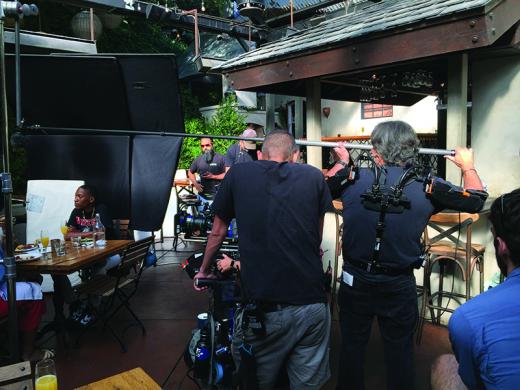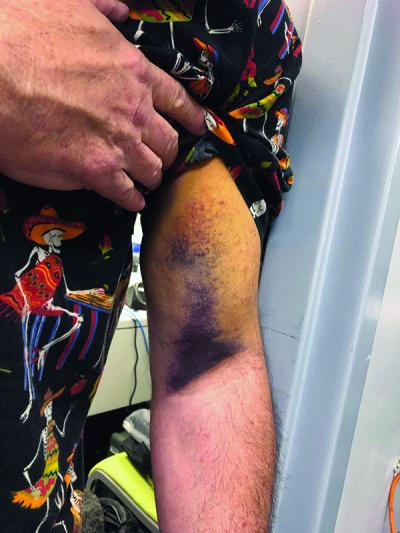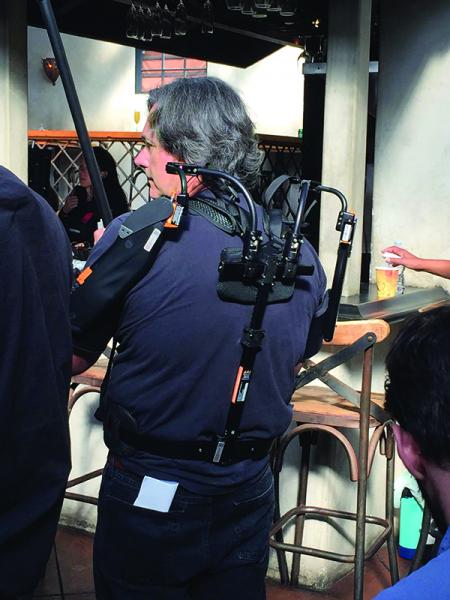The Comeback: Recovering From Rotator Cuff Surgery
by Bryan Cahill

Act 1:
“Mr. Cahill,
Unfortunately, your MRI shows you have a full tear of your supraspinatus tendon, along with a partial tear of your biceps tendon. Please schedule an appointment with an orthopedic surgeon as soon as possible.”
Crap! I had a pretty good notion even before the diagnosis with the way my shoulder was feeling but I was hoping for the best. The diagnosis clearly doesn’t sound good. But, what does it mean? Time for a little exposition.
The supraspinatus is part of the rotator cuff of the shoulder. A supraspinatus tear is a tear or rupture of the tendon of the supraspinatus muscle. I get opinions from two surgeons. Both tell me the only option for a full tear is surgery as the humerus bone will start pushing upward past the shoulder joint which is not very funny (Dad joke). Like it or not, I’m heading to surgery.
So, this is my story and everyone else’s will be a little or even a lot different. I’m hoping that sharing my experiences here might be helpful to others facing similar situations to my own.
Cut To: The surgeon refers me to a pain management physician. This is new to me but it seems quite common now to have someone on the team who only deals with post-op pain. My surgeon confidently states that with the pain management physician, my recovery process should be relatively painless. How wrong he is! Even so, you’ll want to make sure you have all your prescriptions at home, ready to use once you’ve had your surgery.
The surgeon’s office sells me a cold therapy system to ease pain and swelling. Later, I find that I could have paid a lot less by shopping online. They also sell me a sling that I will be wearing most of the time, including while I sleep for the first four weeks.
My surgeon also recommends a Rengenten implant made from sterilized bovine tendon. Smith Nephew, maker of the implant, claims that it accelerates the healing process over traditional surgery by six weeks, allowing patients to begin physical therapy almost immediately. The implant costs $3,000 and is not currently covered by our insurance. I felt the benefit of being able to boom six weeks earlier outweighed the cost and opt for the implant.
I am advised not to push, pull, or lift anything weighing over a pound for the first six weeks following surgery! I’ll also need loose-fitting shirts that open in the front as it will be impossible to pull a shirt over my head for quite a while.
The simplest tasks can become incredibly complicated especially if the affected shoulder is on your dominant side (I was fortunate to have torn my non-dominant cuff). I’ll need a lot of help from wife and kids after surgery. Post-surgery sleeping will take place either propped up in bed or in a recliner. I buy the ugliest recliner in the world off of Craig’s List and put it out for bulky item pickup when I no longer need it.
Most sources will tell you that driving isn’t recommended for the first few weeks after surgery. My surgeon told me driving was fine, but I won’t be driving with my hands at ten and two as the repaired shoulder won’t allow my left hand to get to “ten” for many weeks.
Act 2:
I go under the knife on March 1, 2019. My surgeon finds not only the torn supraspinatus and biceps tendon, but also a torn subscapularis along with tendinosis, and bursitis in the joint. Two anchors are screwed in my shoulder to hold the repaired tendons in place. The surgeon finishes the job on my biceps tendon, cutting it loose, and reattaching it to one of the anchors with sutures that look like thin, braided nylon rope. The other two tendons are also reattached in a similar fashion.
How could my shoulder have gotten so messed up? Rotator cuff tears often occur from wear and tear of the tendon over time. The likelihood of such injuries increases with age and from performing work overhead. Does this remind you of any boom ops you know?

After only a few hours in an outpatient surgical facility, I am sent stumbling to my car so that my wife can drive me home. Now, I’m no greenhorn when it comes to pain. I have been riding and falling off of motorcycles for more than forty years. When I decide to do something, I go all in. I’ve had more broken bones, stitches, sprains, compressed vertebrae, etc., than I can count. And, this surgery is an arthroscopy. Little incisions should equal little pain, right?
The pain management doctor prescribes a cornucopia of medications, including Lyrica, Tzanidine, Tramadol, hydrocodone, and 600mg Ibuprofen. Even armed with my own little pharmacy of meds, I constantly fantasize about cutting my arm off for the first six weeks. I’m also icing hours every day. I add topical, over-the-counter remedies like Aspercreme, arnica, and then CBD oil to the mix but still have intense stabbing omnipresent pain from my neck to my elbow.
Sleeping propped up, with my arm on a pillow, in the recliner, or on the couch is almost impossible. I pace the house at all hours of the night moving from one spot to another and getting about two hours of sleep on average. After the first week, I lay off the hydrocodone because I return to driving the morning school carpool. I steer by holding the wheel with my repaired arm resting on my legs at six and my other arm at noon. After dropping off the kids, I work an eight-hour day at Loyola Marymount University, go to physical therapy twice a week, and exercise twice daily at home. I quite frankly don’t know how long I can keep it up.
According to one surgeon, the recovery goal with rotator cuff surgery is to get ten percent better every month. Even when surgery and rehabilitation are successful, the repair is prone to re-injury up to twelve months following the procedure.
My physical therapy (PT) begins less than a week after surgery. This is where the hard work begins. It seems that once I feel comfortable and capable of properly doing any of the exercises, I’m given something new, harder, and more painful to do.
The worst part of PT though is the manipulation by the therapist. My surgeon and my physical therapist both refer to the repair as “tight.” Knowing how I use my shoulders, my surgeon took extra care to make sure everything was very firmly held in place. This is apparently better for the long-term prognosis but it makes regaining mobility that much more difficult.
Every time I’m about to have a post-op exam with my surgeon, my therapist worries that we’re not making enough progress and really goes to town on my shoulder. She is constantly pushing the limits of my range of motion in all directions and trying to get the joint to move a little further with every appointment. I feel like a roasted chicken having a wing torn off.
There are many days where I leave PT in greater pain then when I came in and I wonder if the surgical repair has somehow been damaged. On top of the appointments, it now takes four hours to get through the exercises I do at home twice a day. So, I split them doing half in the morning and half at night. The gains are often incremental and the pain so great that it is hard to stay positive.
Finally, six weeks after surgery and quite suddenly, the pain lets up enough so that I’m sleeping four hours a night and I want to keep my arm. Although it may not seem like it, this is a huge step forward. I can burn the sling and start thinking about things other than how badly I hurt.
Act 3:
A montage spanning the next four and a half months. I continue to do PT, exercise at home, lots of low fives with the PT staff, pain decreases, strength, and range of motion increase to the point where I sprint up the steps of the Philadelphia Museum of Art with a Bill Conti theme blaring. Okay, it is not that dramatic but, on July 29, less than five months after surgery, my surgeon removes all limitations and tells me I can start booming again.
My first opportunity comes on August 5; five months and four days after surgery. I take the Airframe loaned to me by Levitate Technologies to day play on the BET series Twenties, with Von Varga mixing and Yervant Hagopian on utility duties.
Although there aren’t any particularly hard setups on this day, the Airframe gives me a little more confidence in returning to boom work. It provides lift assist and doesn’t restrict my motion in any way. Comfortable, light and slim, I use it all day with ease.
Epilogue:
On Thursday, Sept. 12, 2019, I bring the loaner Airframe out to Chris Walmer on the set of Schooled at Sony Studios, along with some prototype “cassettes” that offer even more lift. He tells me he used it for some ten-minute take the following day and that it “worked great.”
I believe it is possible that exoskeletons like this might not only help prevent injury but also get people like me back to work sooner after an injury or even save the careers of experienced boom operators who previously might have gone on permanent disability.
Every day, I am still icing, stretching, and exercising. Getting to where I am now has been an arduous journey but it feels great to be back on set!
